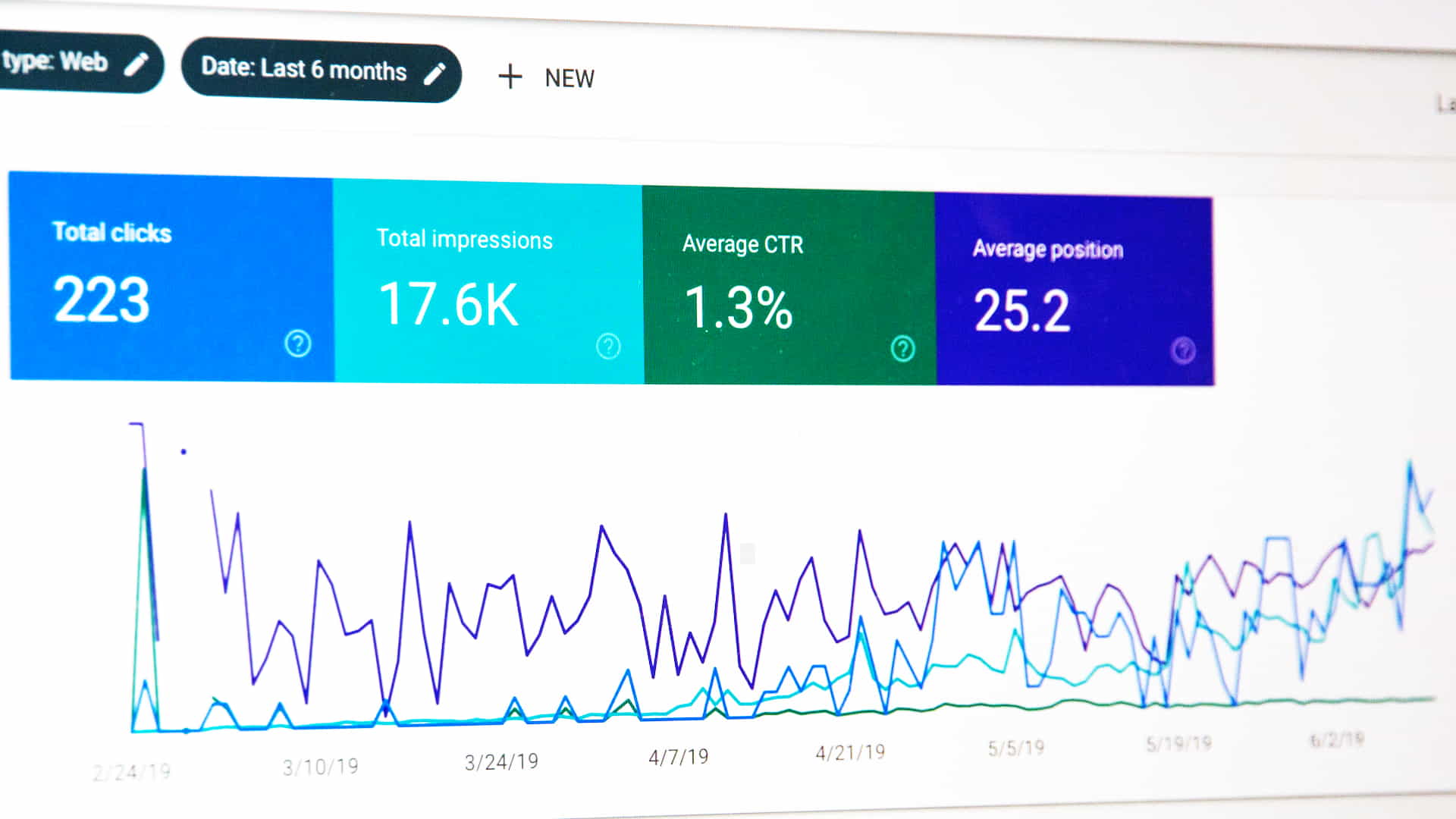Take Your Rankings to The Top With Search Engine Optimization, Better Local SEO
To get better rankings in major search engines like Google and Bing, you must create a great site containing content your visitors will find helpful. Of course, It’s a little more complicated than that, but we’re here to walk you through the process, so let’s get started!
Table of Contents
- Take Your Rankings to The Top With Search Engine Optimization, Better Local SEO
- Watch Our YouTube Video "Learn WordPress SEO in 5 Minutes: Okay, 7 Minutes" and Get Better Rankings
- Step 1: Determine Your Goal
- Step 2: Creating Your Website
- Step 3: Creating a Digital Footprint
- Step 4: Making Time Makes a Difference
- Step 5: Creating an Effective SEO Strategy for Local Businesses
- 1. Conduct keyword research
- 2. Optimize your Google My Business listing
- 3. Use local keywords and structured data
- 4. Build quality backlinks
- 5. Monitor your progress and adjust as needed
- Local SEO Tip: Optimize Your Google My Business Listing
- Bonus Step: Sample Online Marketing Plan
- Unleashing the Power of SEO: The Ultimate Guide
- SEO Questions Answered
- Best SEO Tips
- Top 3 SEO Strategies
- Golden Rule of SEO
- Do and Don'ts of SEO
- Do's of SEO
- Don'ts of SEO
- What Does an SEO Strategy Look Like?
- What is an SEO Checklist?
- What are the 7 Types of SEO?
- What is the Most Difficult Part of SEO?
- How Do I Rank High in SEO?
- What negatively affects SEO?
- What is the best SEO tool?
- Why is SEO so difficult?
- Do short blog posts hurt SEO?
- Final Thoughts on SEO
- Editors Notes:
- James Turner

What is Your Goal?
To create a successful site, you need to have a goal and plan precisely how you will reach that goal. If you want your website to rank well, your plan needs to be focused, so don’t try to be all things to all people. The best course of action is almost always focusing on a niche, then explaining to your target audience why you are the best for widgets in town.
KNOW YOUR…
- Self
- Competition
- Audience
- Limits

Use SEO to Get Better Rankings and More Traffic
Step 2: Creating Your Website
Now that you have set a goal to get better rankings, and more traffic, create a plan, and understand the target audience, it’s time to create a fantastic website. Every aspect of your website design should be focused on accomplishing your goal, which means you need to get your visitors to do something. What that something is will vary depending on your goals, but make sure your website is like a funnel with all points leading to your something.
- Sell Products
- Promote Services
- Branding
- Generate Leads
- Customer Service
- SOMETHING!

Step 3: Creating a Digital Footprint
Although there are many factors involved in the ranking process, one of the most important factors is reputation. How does Google know you can be trusted? How do the search engines know whether or not you are reliable? One of the fastest, easiest and best ways to establish your reputation is to create a digital footprint.
How Do I Create a Digital Footprint?
Creating a digital footprint is pretty easy, and it is something that MUST be done to protect your brand and to grow your business online. As soon as your site is live you need to start registering accounts on all the top social networks and other authority sites. This will help you begin the process of creating a digital footprint.
You can start by getting listed on the sites below if applicable, but this is only the beginning and you should spend time researching sites that are specific to your industry and get listed on or interact with any sites that could benefit your business.
Suggested Accounts
- Google My Business
- Yelp
- YP.com
- Tumblr
- YouTube
There are, of course, many more sites out there, but this is a good start. Remember, be consistent and create pages using your exact name if at all possible. If you have not registered your business yet, you may want to consider creating a unique name to ensure you can secure facebook.com/yourname and twitter.com/yourname instead of a variation of your name, which could be confusing and make branding more difficult.




Step 4: Making Time Makes a Difference
We all want to get better rankings, but few of us, including myself, set aside time to accomplish our goals. Unfortunately, improving your rankings will require hard work on your part. However, the good news is that few of your competitors will set aside time each day to improve their search engine rankings, which means you can rank very well for your chosen keywords if you put forth the effort.
Create a Marketing Plan That Works for You
Being a website designer with 20 years of experience, you may be shocked that I have never dedicated time to marketing my business. As a professional, I have spent a great deal of time marketing my business, but I have only recently set aside time dedicated solely to that purpose.
My Plan is Simple, and it Works for Me
You need to create a plan that works for you because that is the only way you will stick to it. My plan is simple; I get to work an hour earlier each day and devote that hour to creating new content for my site, updating existing content, social media management, and other related tasks. In the future, I may consider devoting specific days to content, social media, and other marketing efforts because it may be more efficient.
Suggested Marketing Efforts
- Social Media Management
- Create New Pages and Posts
- Update Existing Content
- Network With Other Businesses
- Improve Your Search Engine Rankings
How and when you do these things are not as important as doing them. However, I believe it helps to set aside time each day to promote your business. Increasing your search engine rankings, promoting your brand on social media sites, and networking with other businesses in your area are all fantastic ways to grow your business online and offline.

Creating a Local SEO Strategy for Your Business
Step 5: Creating an Effective SEO Strategy for Local Businesses
A local business must have a strong internet presence to get better rankings and reach potential clients in your neighborhood. Your company can stand out in search engine results and draw the proper clients to your website with an effective optimization (SEO) plan. Here are some guidelines for developing a successful SEO plan for your neighborhood business.
1. Conduct keyword research
Understanding the internet search terms used by your target clients is essential before you begin optimizing your website. You can use this to decide what to concentrate on in your SEO strategy. You can use free tools like Google Keyword Planner to find keywords relevant to your company and sector.
2. Optimize your Google My Business listing
Google My Business is a free tool allowing businesses to manage their online presence across Google, including search results. Ensure your Google My Business listing is up-to-date and accurate, including your name, address, phone number, and operating hours. You should also add photos and encourage customers to leave reviews, as positive thoughts can positively impact your ranking in search results.
3. Use local keywords and structured data
Incorporating local keywords into your website and content can help search engines understand the location of your business and improve your visibility in local search results. You should also include structured data, such as Schema.org markup, to give search engines more information about your business and services.
4. Build quality backlinks
Backlinks from other reputable websites can help improve your website’s authority and ranking in search results. Focus on building relationships with local businesses and organizations, and consider creating valuable content, like blog posts or infographics, that other websites may want to link to.
5. Monitor your progress and adjust as needed
SEO is ongoing; therefore, it’s important to keep an eye on the effectiveness of your website and make any necessary improvements. Track the visibility and traffic to your website and look for opportunities to enhance using tools like Google Search Console and Google Analytics.
Local SEO Tip: Optimize Your Google My Business Listing
An effective SEO strategy is crucial for local businesses looking to reach potential customers online. You can improve your website’s ranking and visibility by conducting keyword research, optimizing your Google My Business listing, using local keywords and structured data, building quality backlinks, and regularly monitoring your progress.

Sample Online Marketing Plan for Businesses
Bonus Step: Sample Online Marketing Plan
A well-structured plan and the appropriate tools can make it possible to reach and engage your target audience even if developing and implementing an internet marketing strategy can be a challenging process. To create and carry out an online marketing strategy, follow these steps:
- Identify your target market: Determine the age, gender, region, hobbies, and behavioral patterns of your target audience to start. You can use this information to choose the most effective methods and strategies for reaching them.
- Conduct market research: To comprehend the current market trends and customer needs, research your sector and your competitors. This will enable you to distinguish your brand from competitors and develop a distinctive value proposition.
- Set your goals: Define clear, measurable, and attainable goals for your internet marketing efforts. These could include increasing website traffic, generating leads, improving customer engagement, and boosting sales.
- Choose your channels: Choose the channels that will be most successful in reaching your target audience based on your study and comprehension of them. Search engines, social networking, email marketing, and online advertising are a few examples.
- Develop your content: Produce entertaining, pertinent, and high-quality content that appeals to your target demographic and advances your marketing objectives. This might apply to e-books, infographics, films, and blog entries.
- Launch and monitor your campaign: Execute your online marketing strategy, monitor your development, and assess the impact of your efforts. Make necessary adjustments by using analytics tools to track important metrics like website traffic, conversions, and engagement.
- Refine and adjust your strategy: Based on the outcomes of your efforts, continually assess and improve your internet marketing plan. To gradually enhance your performance, try out new strategies, compare various plans of action, and make data-driven choices.
Relevant Points:
- Identify target audience demographics
- Conduct market research
- Set clear and measurable marketing goals
- Choose effective marketing channels
- Develop high-quality, relevant content
- Launch and monitor your campaign
- Use analytics to track results and adjust strategy
- Continuously refine and adjust your marketing plan.

Search Engine Optimization Tips and Final Thoughts
Unleashing the Power of SEO: The Ultimate Guide
Digital marketing’s key component of search engine optimization (SEO) may make or break your online presence. Your website’s organic traffic generation, exposure on search engine result pages (SERPs), and, eventually, your bottom line can all benefit from this. Understanding the ins and outs of SEO is crucial for success in the digital age; regardless of your level of marketing experience, there are things you can do right now to improve your rankings.
SEO Questions Answered
- What are the best SEO tips?
- What are the top 3 SEO strategies?
- What is the golden rule of SEO?
- Do and don’ts of SEO?
- What does an SEO strategy look like?
- What is an SEO checklist?
- What are the 7 types of SEO?
- What is the most difficult part of SEO?
- How do I rank high in SEO?
- What negatively affects SEO?
- What is the best SEO tool?
- Why is SEO so difficult?
- Do short blog posts hurt SEO?
Best SEO Tips
A few best practices remain timeless in the often-complex and dynamic world of SEO. When optimizing your website for search engines, keep the following in mind:
- Conduct keyword research to understand what your target audience is searching for and what terms they are using.
- Ensure that your website is fast and responsive, and that it provides a good user experience.
- Make sure your website is well-organized and easy to navigate.
- Publish high-quality, relevant content that provides value to your target audience.
- Build high-quality backlinks from reputable websites to demonstrate to search engines that your website is authoritative and trustworthy.
Top 3 SEO Strategies
In order to be effective, SEO demands a well-thought-out plan over the long run. The top three SEO tactics that you should be concentrating on are as follows:
- Technical SEO: This involves optimizing your website’s technical aspects, such as website speed, mobile responsiveness, and site structure, to ensure it’s easy for search engines to crawl and index your content.
- On-page SEO: This involves optimizing individual web pages for search engines, including optimizing your content for keywords, using descriptive title tags and meta descriptions, and using header tags to structure your content.
- Off-page SEO: This involves building high-quality backlinks from other reputable websites to increase your website’s visibility and authority in the eyes of search engines.
Golden Rule of SEO
The cornerstone of SEO is to design a website that works well for both users and search engines. This entails developing a quick, responsive, user-friendly website that offers high-quality, relevant material that your target audience is searching for. By prioritizing users, you’ll organically optimize your website for search engines, which will eventually improve search engine ranks and boost organic traffic.
Do and Don’ts of SEO
It’s critical to understand what to do and what not to do with SEO if you want to succeed. Some of the most significant SEO dos and don’ts are listed below:
Do’s of SEO
- Do conduct keyword research to understand what your target audience is searching for.
- Do publish high-quality, relevant content that provides value to your target audience.
- Do build high-quality backlinks from reputable websites.
- Do optimize your website’s technical aspects, such as website speed and mobile responsiveness.
Don’ts of SEO
- Don’t engage in any black hat SEO tactics, such as keyword stuffing or link spamming, as these practices can get your website penalized or banned by search engines.
- Don’t publish low-quality, irrelevant content just for the sake of having content on your website.
- Don’t build low-quality backlinks from spammy websites, as these links can harm your website’s reputation and search engine rankings.
- Don’t ignore the importance of user experience, as this can negatively impact your search engine rankings and drive users away from your website.
What Does an SEO Strategy Look Like?
A successful SEO plan should take the following actions and be customized to your company and target market:
- Keyword research to understand what your target audience is searching for.
- Analysis of your website’s current technical and on-page optimization to identify areas for improvement.
- Creation of high-quality, relevant content that provides value to your target audience and is optimized for keywords.
- Building high-quality backlinks from reputable websites to increase your website’s visibility and authority.
- Continuous monitoring and adjustment of your SEO strategy as search engines and your target audience’s search habits evolve over time.
What is an SEO Checklist?
A thorough list of tasks and best practices known as an SEO checklist will assist you make sure that your website is search engine optimized. Among the items in an SEO check list could be:
- Conducting keyword research and analyzing your target audience’s search behavior.
- Optimizing your website’s technical aspects, such as website speed, mobile responsiveness, and site structure.
- Ensuring that your website’s content is high-quality, relevant, and optimized for keywords.
- Building high-quality backlinks from reputable websites.
- Monitoring your website’s search engine rankings and traffic to measure the success of your SEO efforts.
What are the 7 Types of SEO?
There are seven main types of SEO, including:
- Technical SEO
- On-page SEO
- Off-page SEO
- Local SEO
- Content SEO
- E-commerce SEO
- Voice Search Optimization
Each type of SEO focuses on a different optimization aspect and has its unique set of best practices. To succeed with SEO, it’s important to comprehensively understand each type and how they work together to improve your website’s search engine rankings.
What is the Most Difficult Part of SEO?
The most challenging part of SEO is often staying up-to-date with the constantly evolving search engine algorithms and best practices. Search engines like Google are always updating their algorithms to provide users with the most relevant and high-quality results. This means that SEO strategies that were once effective may no longer be as impactful. Staying informed about the latest developments in SEO and continuously adjusting your strategy is essential for success in the long-term.
How Do I Rank High in SEO?
To rank high in SEO, you need to comprehensively understand how search engines work and what they look for in a website. This includes optimizing your website’s technical aspects, such as website speed and mobile responsiveness, as well as creating high-quality, relevant content that is optimized for keywords and provides value to your target audience. Additionally, building high-quality backlinks from reputable websites and continuously monitoring and adjusting your SEO strategy can help increase your website’s visibility and search engine rankings over time.
What negatively affects SEO?
Numerous variables can have a detrimental effect on the SEO of your website. The most frequent offenders are shown in the list below:
- Keyword stuffing: Using the same term too frequently on your website will lower its ranking. Aim to incorporate keywords into your content naturally so as to improve user experience.
- Duplicate content: Search engines prefer original content, so ensure your website has unique, high-quality content. Copying text from other websites or using spun content will not help your SEO.
- Lack of mobile optimization: A mobile-friendly website is essential for SEO as more and more people access the internet using mobile devices. Make sure your website is user-friendly and responsive across all platforms.
- Poor website design and navigation: The design and layout of your website should be user-friendly and easy to navigate. A confusing website can lead to a high bounce rate and negatively impact your SEO.
- Neglecting technical SEO: Technical SEO includes things like optimizing your website’s structure and making sure that it is easy for search engines to crawl and index your pages. Neglecting technical SEO can harm your website’s ranking.
What is the best SEO tool?
Many different SEO tools are available, and the best one for you will depend on your specific needs and budget. Some popular SEO tools include:
- Google Analytics: This free tool provides data and insights on your website’s traffic and performance. You can use this information to improve your website’s SEO and make more informed decisions about your content and marketing strategies.
- Ahrefs: Ahrefs is a paid tool that analyzes your website’s backlinks and keyword ranking. It is an essential tool for conducting competitor research and staying on top of your SEO efforts.
- SEMrush: SEMrush is a thorough SEO tool that offers information on your website’s rating, traffic, and backlinks, competitor analysis and keyword research. SEO experts frequently utilize this premium tool.
Why is SEO so difficult?
SEO can be difficult for a number of reasons. First of all, because search engines regularly modify their algorithms, what was formerly successful might no longer be. Second, SEO takes a lot of time and work since you have to produce excellent content, develop a solid network of backlinks, and ensure that your website is technically sound. Finally, it can be challenging to rank highly due to the intense rivalry in search engine rankings. However, if you have a firm grasp of SEO best practices and make a continuous, ongoing effort, you can make your website rank highly.
Do short blog posts hurt SEO?
Although a blog post’s length has no direct bearing on its SEO, lengthier content can be better for your website. A longer blog article might offer more information and specifics about a certain issue, which can help users see your website as a reliable resource for information. This can thus lengthen consumers’ stays on your page and reduce bounce rates, both of which are good things for search engines. Additionally, larger blog entries may give you more chances to use pertinent keywords, internal links, and external connections, which may help your SEO.
In conclusion, SEO is a crucial component of online marketing and greatly influences how visible, and popular your website is. You may efficiently raise the search engine ranking of your website and attract more targeted visitors by adhering to best practices and remaining current with the most recent trends and algorithms. Concentrating on producing high-quality, pertinent, and well-optimized content and constantly reviewing and modifying your plan as necessary, whether you’re just getting started or trying to improve your current SEO strategy. When used properly, SEO can be a potent tool for expanding your internet visibility and boosting commercial success.

Internet Marketing and SEO for Small Businesses
Final Thoughts on SEO
Careful planning and perfect execution of that plan will ensure your success, so take your time throughout the process. Work smart, do your research, and KNOW your goal and how you plan to reach that goal. Don’t be afraid to ask family, friends, or professionals for advice or assistance, but remember you are the boss, so be the boss and make good, well-informed choices.
Summary
- Plan and Define Your Goals
- Build an Amazing User-Focused Site
- Create a Size 14 Digital Footprint
- Carefully Manage Your Online Presence
- Online Marketing Plan
Editors Notes:
Updated on 8/24/2018: Added Step 4 to include additional information that may benefit your SEO efforts.
Updated on 02/03/2023: Added Step 5, a “Bonus Step,” and “Unleashing the Power of SEO: The Ultimate Guide,” an SEO guide containing excellent information on what you should and should not be doing to ensure your website ranks on search engines. We have also added a sample internet marketing plan to help small businesses promote their website and business online.
Disclosure: You may find affiliate links to beneficial resources within this article. You won’t pay more for using our link, but we’ll get a commission. This supports our content creation, and we only suggest products we genuinely believe in. Thank you for being so understanding!
Affiliate Links
- Web Hosting that is fast, dependable, and affordable.
- The Divi WordPress Theme is the #1 best selling WordPress theme.



